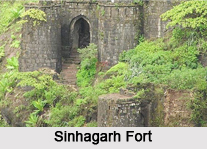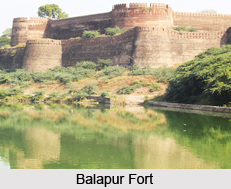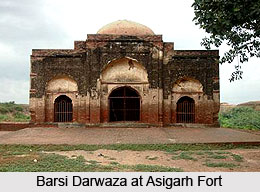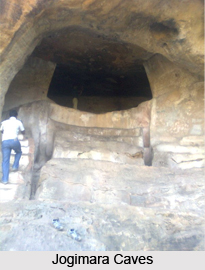 The Sinhagarh Fort or Lion`s Fort lies about twelve miles to the South West of Pune. It is spread over a wide area at a height of 4322 feet above sea level at one of the highest points on the Bhuleshwar range. This 800 feet fort has been the site of many important battles, most importantly the battle of Sinhagarh in 1670. The Sinhagarh fort has been constructed in such a way that it is strategically located amongst a number of different forts including the Torna Fort, Rajgarh Fort and Purandar Fort among others.
The Sinhagarh Fort or Lion`s Fort lies about twelve miles to the South West of Pune. It is spread over a wide area at a height of 4322 feet above sea level at one of the highest points on the Bhuleshwar range. This 800 feet fort has been the site of many important battles, most importantly the battle of Sinhagarh in 1670. The Sinhagarh fort has been constructed in such a way that it is strategically located amongst a number of different forts including the Torna Fort, Rajgarh Fort and Purandar Fort among others.
History of Sinhagarh Fort
A brief history of the fort reveals that it passed through the hands of a number of different dynasties before it finally fell to the British. The fort was captured in 1328 Muhammad bin Tughlaq. Following this it fell to Malik Ahmed, the founder of the Ahmednagar dynasty, when he captured Shivner in 1486. In 1637 it was surrendered to Bijapur and, after repeatedly changing hands, it was the scene of one of the most daring exploits in Maratha history when it was retaken by Chhatrapati Shivaji`s forces under Tanaji Malusare in the famous Battle of Sinhagarh in 1670. The fort was initially called `Kondana` after the sage Kaundinya. Shivaji changed the name of the fort from Kondana to Sinhagarh in 1647. It was besieged by Aurangzeb between 1701 and 1703. Finally, the Sinhalgarh fort was taken over by the British, along with a lot of treasure, under General Pritzler on 2 March, 1818.
Architecture of Sinhagarh Fort
The construction of the fort is such that there are two steep cliffs to the North and South. From this rises a wall of basalt about 40 feet high, crowned by ruins. Two tortuous paths rise from the north-east and southwest. Each is defended at the top by three successive gates in a poor state of repair. The walls are built of roughly bonded dressed stone.
The first gate on the North-East approach is the Pune Gate. It is flanked by a conical tower on the outer side and a section of a tower against the cliff face. The gateway stands in a pointed-arched recess with central battlements pierced by loopholes. The second gate is similar in terms of construction but exists in a more ruinous condition. The third gate is the most complete with intact towers and a wing wall. On the west side a strong wedge-shaped wall seals the mouth of the gorge, the apex acting as a breakwater for the river during heavy rain.
The upper surface of the fort is undulating and irregular and retains few buildings. Ruins of temples, tombs and towers are scattered about. A Kali temple is found located here, along with a statue of Lord Hanuman to the right side of the temple. Near the gorge is a monument commemorating the capture of the fort in 1670 by Tanaji, who became a national hero. The tomb of Rajaram Shivaji`s younger son and the house of the famous freedom fighter Bal Gangadhar Tilak are also found here. There are numerous modern bungalows on the hill which were once used by Europeans from Pune during the hot weather.
The Sinhalgarh fort is one of many forts captured by Shivaji in his remarkable exploits. It now part of training at National Defence Academy, Khadakwasla.




